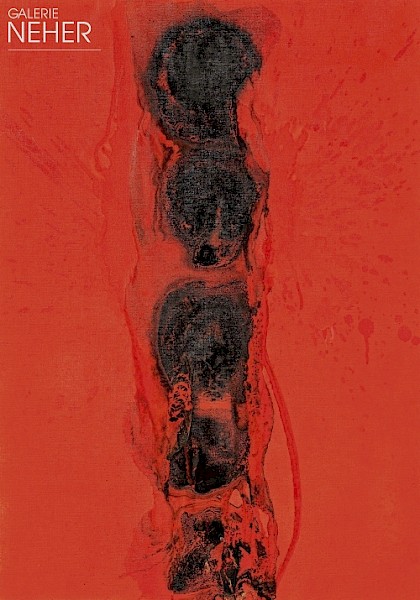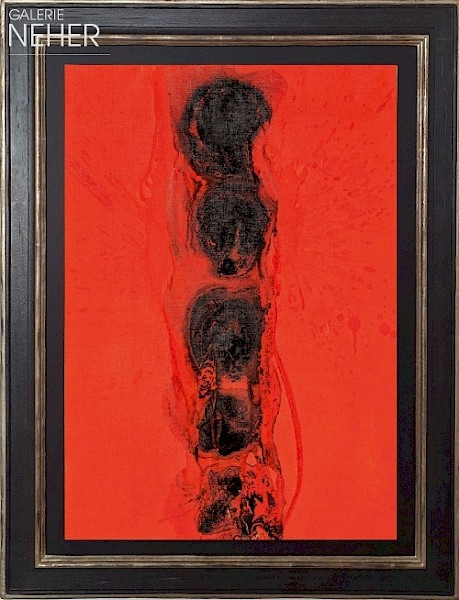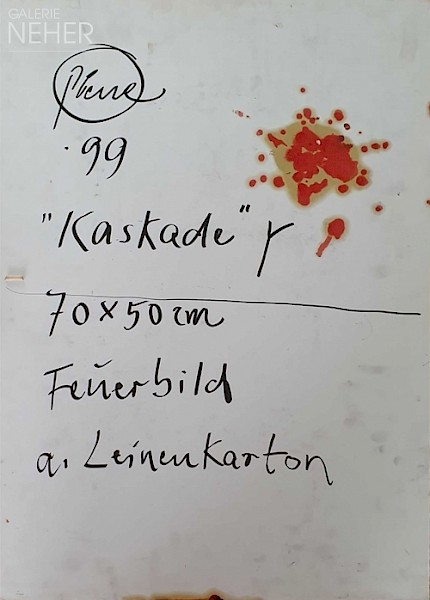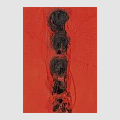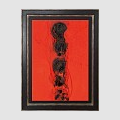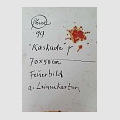Otto Piene - Kaskade (Cascade), 1999
Fire gouache on linen on cardboard
70 x 50 cm / framed 90 x 70 cm
27 x 19 inch / framed 35 x 27 inch
Signed, dated, titled, designated: "piene (in a circle), '99 "kaskade" 70x50 cm Feuerbild a. Leinenkarton"
N 9450
Provenance:
Atelier des Künstler
Privatbesitz
Exhibitions:
Essen, Galerie Neher, Herbst – Winter 2021, Katalog mit farbiger Abb. S. 43
Otto Piene - Kaskade (Cascade), 1999
Fire gouache on linen on cardboard
70 x 50 cm / framed 90 x 70 cm
27 x 19 inch / framed 35 x 27 inch
Signed, dated, titled, designated: "piene (in a circle), '99 "kaskade" 70x50 cm Feuerbild a. Leinenkarton"
N 9450
Provenance:
Atelier des Künstler
Privatbesitz
Exhibitions:
Essen, Galerie Neher, Herbst – Winter 2021, Katalog mit farbiger Abb. S. 43
About the work
The involvement with new pictorial means such as light, space and movement was one of the most important aspects of art for Otto Piene, born in 1928 in the Westphalian town of Laasphe: "Light is the first condition for all visibility. (…) Light is the life element of the human being and of the image.”
(Otto Piene, “Über die Reinheit des Lichts”, in: ZERO 2, 1958, reprinted in: Ante Glibota (Ed.), Otto Piene, Paris 2011, p. 542)
Piene formed the ZERO group, which had made a new beginning for art its task after the end of the Second World War, together with Heinz Mack in 1958. With completely novel principles of design and aesthetic ideas, the artists developed a pictorial language dominated by light and movement in order to thus overcome the handed down and, in the face of the atrocities of National Socialism, obsolete understanding of art. Bold and creative experiments were carried out in the studios during this period. Characteristic of the ZERO period and its protagonists were many spectacular and legendary actions and environments. Fire was Otto Piene’s medium. One can see the use of fire in the work "Kaskade" from 1999: the canvas is singed at several points; the paint has formed blisters. Individual burn marks accentuate the vertical centre. The fire appears to have climbed up the image when Piene set the paint on fire. The card is already coloured In the work discussed here. The actual work was thus first created with fire. Forms and changes in colour that definitely also possess associative power originated from this initially purely chemical process. For Piene, who passed away in 2014 in Berlin, the setting on fire of the paint always possessed great proximity with the eruptive natural forces of the Earth and of the universe. For him, these were the "expression of the most concentrated life”.
(Otto Piene, “Jetzt”, in: ZERO. Mack-Piene_Uecker, exhib. cat. Kestner-Gesellschaft Hannover, Hannover 1964, p. 103)
Text authored and provided by Dr Andrea Fink, art historian
The art historian, curator and freelance publicist Andrea Fink studied art history, cultural studies and humanities, modern history and philosophy in Bochum and Vienna. Doctorate in 2007 on the work of the Scottish artist Ian Hamilton Finlay. As a freelance curator and art consultant, her clients include, among others, the Kunstverein (art association) Ahlen, Kunstverein Soest, Wella Museum, Museum am Ostwall Dortmund, ThyssenKrupp AG, Kulturstiftung Ruhr, Osthaus Museum Hagen, Franz Haniel GmbH, Kunsthalle Krems, Austria.
